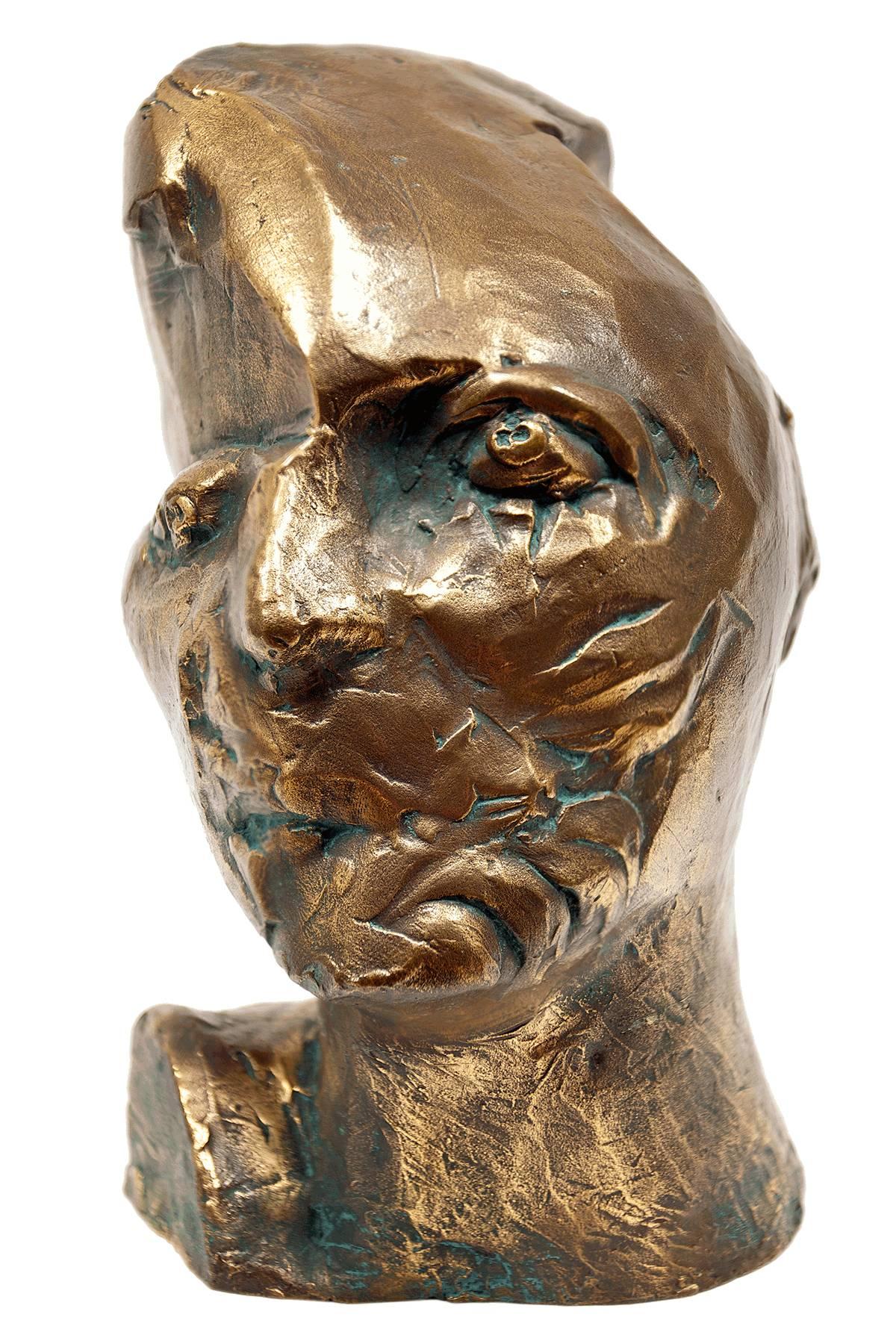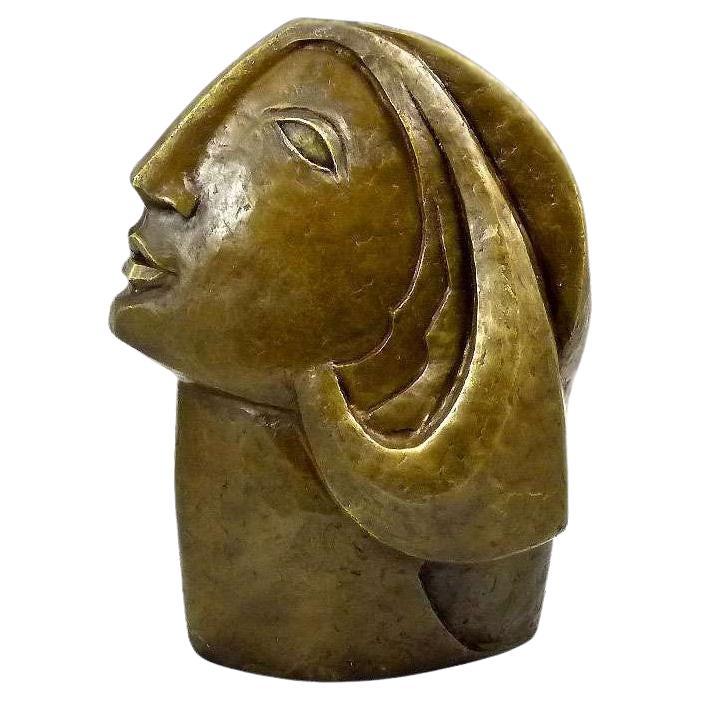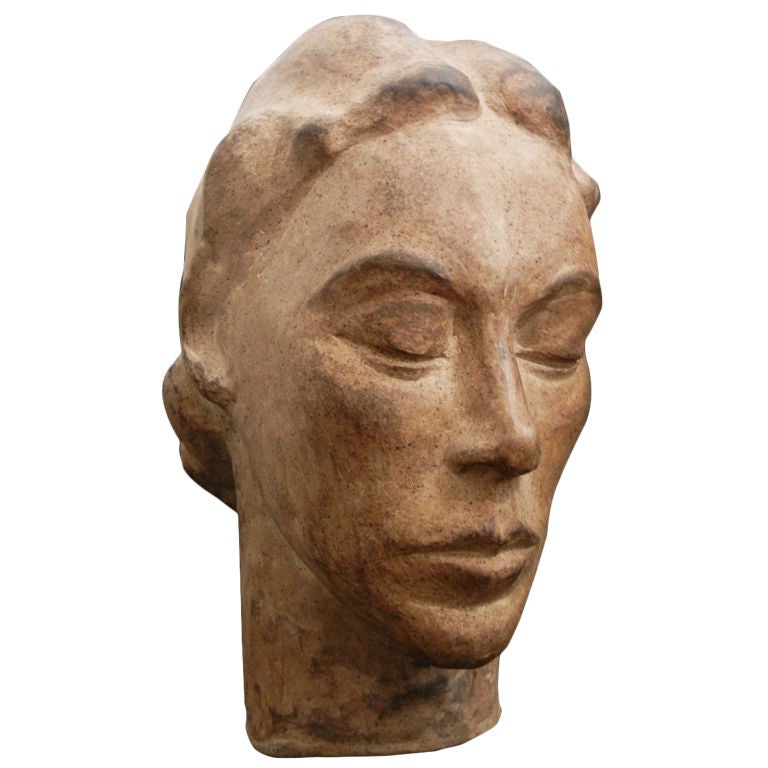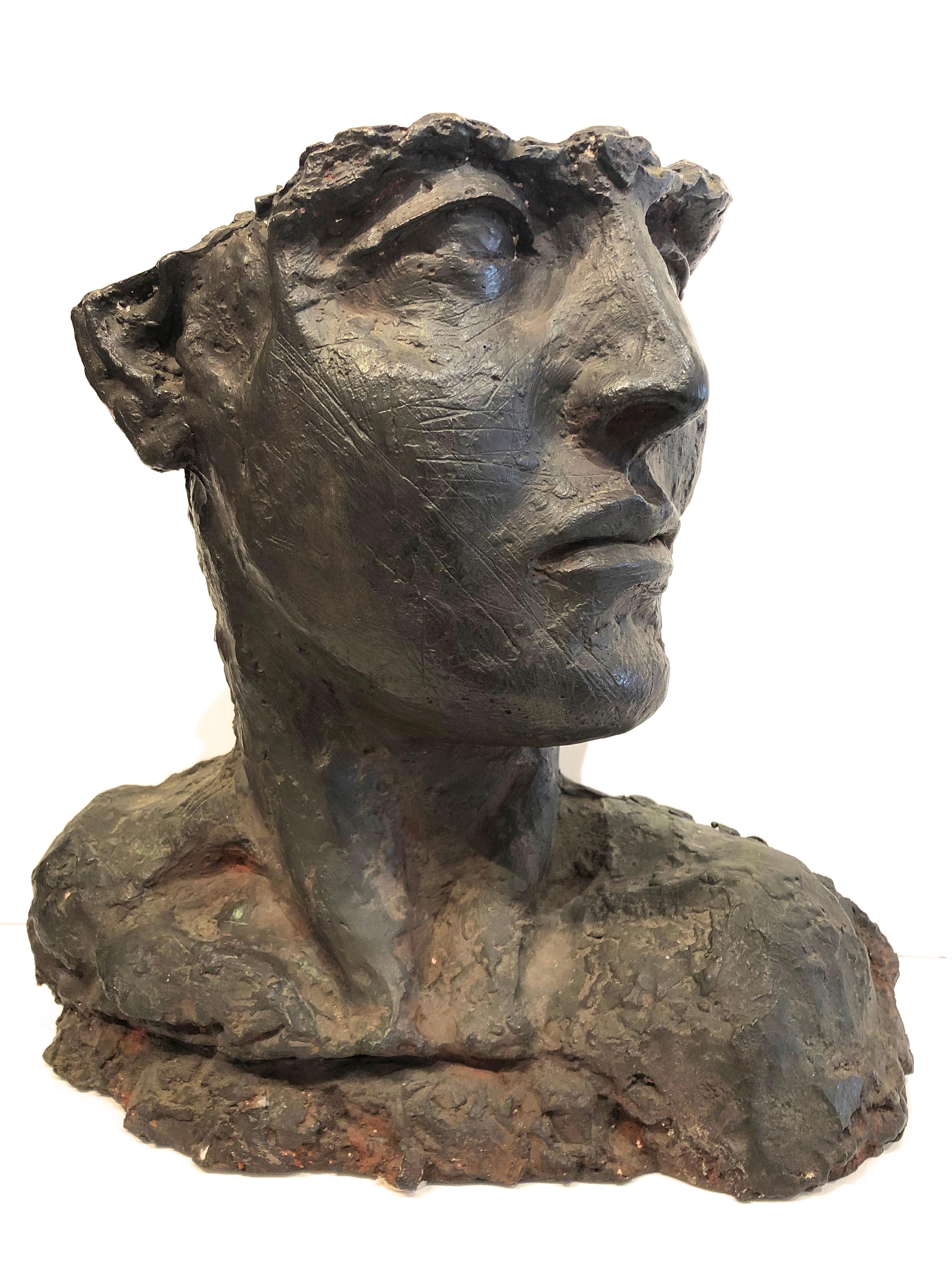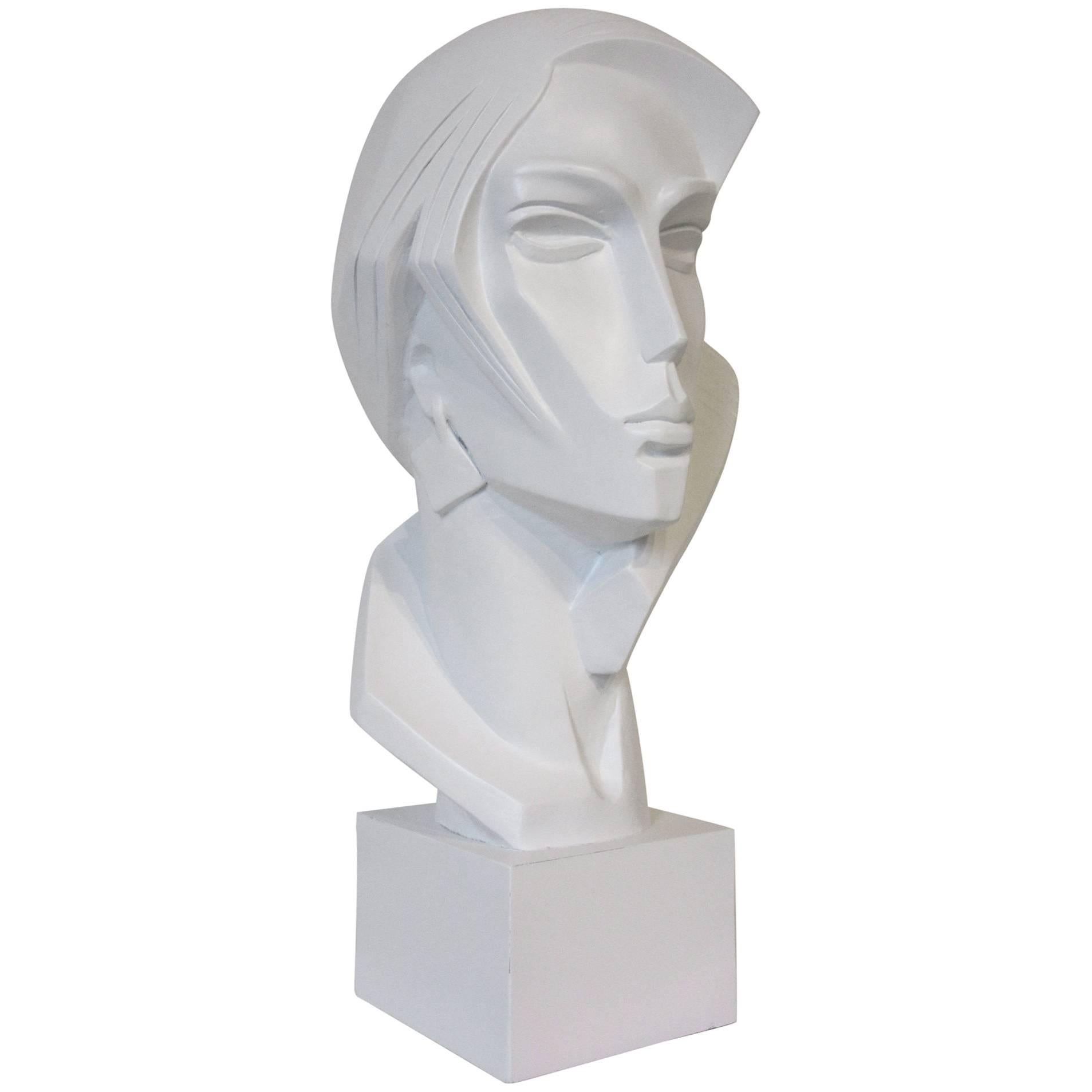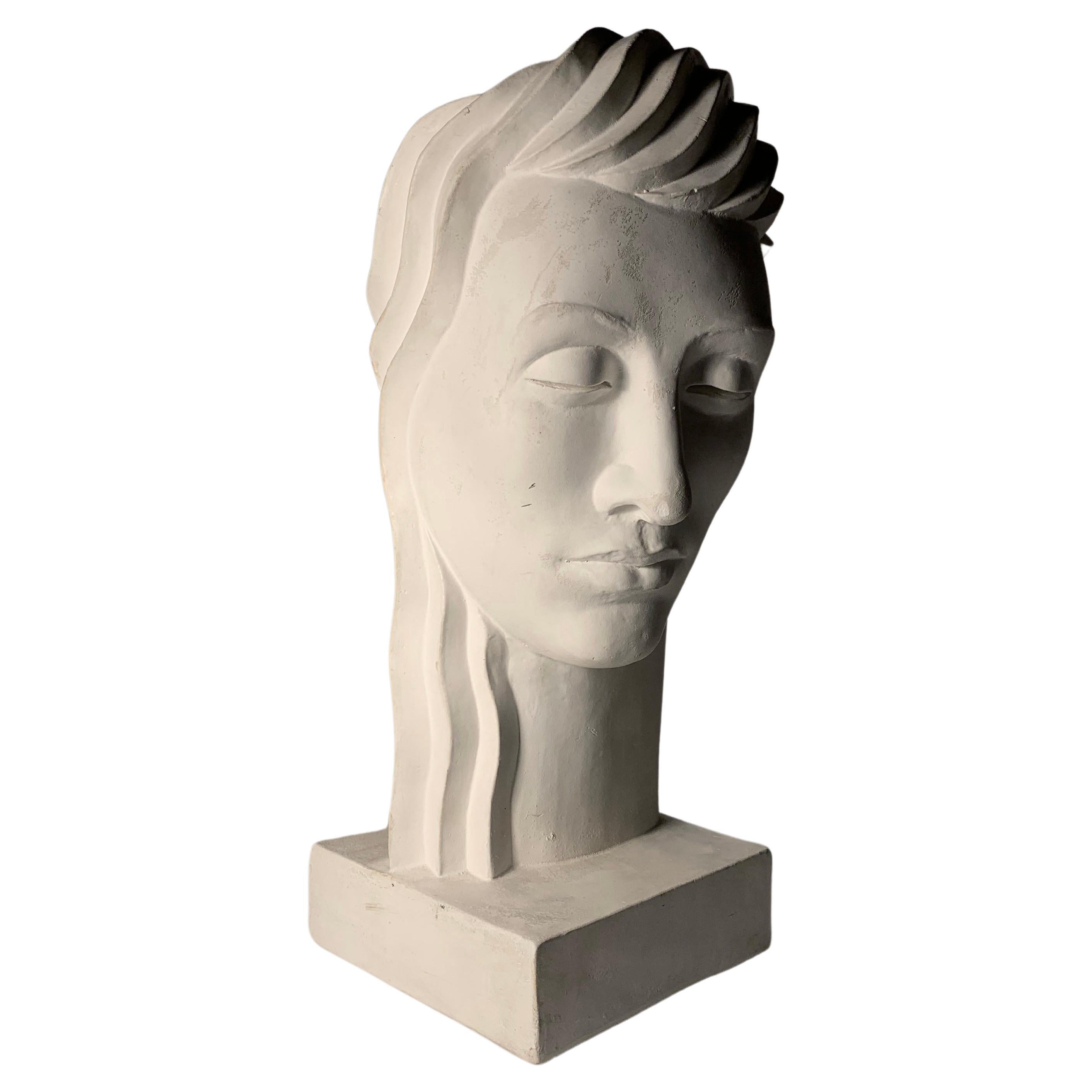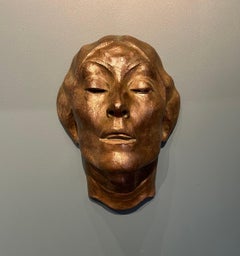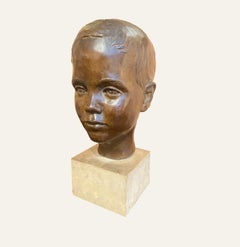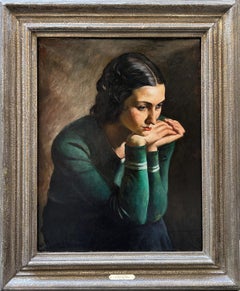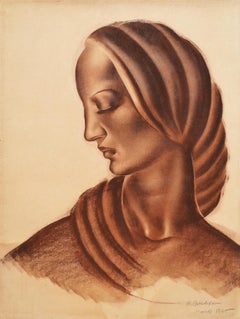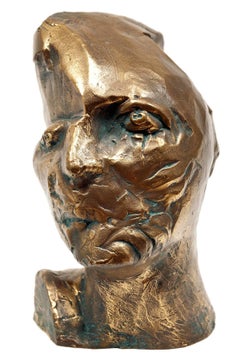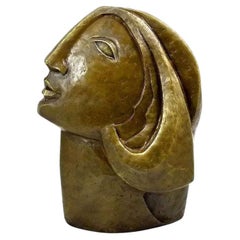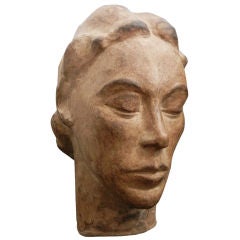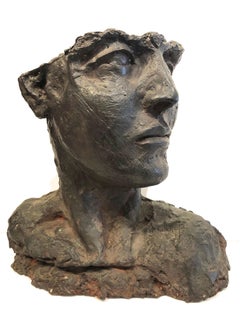Items Similar to Head of Dame Edith Sitwell
Want more images or videos?
Request additional images or videos from the seller
1 of 4
Maurice LambertHead of Dame Edith Sitwell
$35,674.46
£26,000
€30,427.46
CA$49,765.08
A$53,983.87
CHF 28,387.74
MX$656,874.62
NOK 354,892.44
SEK 334,707.15
DKK 227,179.95
About the Item
Maurice Lambert
Head of Dame Edith Sitwell
1901-1964
Patinated bronze on marble base
Dimensions: 7 x 16 inches (18 x 41 cm)
Provenance
Private collection
Originally commissioned by Edith's brother Osbert Sitwell circa 1926/27. Our version is of the same period and must have been commissioned at the same time. A version of this piece made in 1984 in aluminium is held in the permanent collection of the National Portrait Gallery (NPG 5801).
Maurice Lambert
Maurice Lambert, born in Paris, was son of the Russian-born Australian painter George Washington Lambert. Initially, George Washington Lambert pursued a career as an illustrator and painter. However, in the last decade of his life, having achieved success in the London art, he turned to sculpture upon his return to Australia. While in London he was a member of the Chelsea arts club and was a regular exhibitor at the Royal Academy.
From 1919, Maurice Lambert attended evening classes at Chelsea Polytechnic. With a growing interest in sculpture, he apprenticed under Francis Derwent Wood, a distinguished British sculptor known for his architectural sculptures, and a friend of Lambert’s father from the Chelsea Arts Club. Lambert’s first sculptures were exhibited at Regent Street’s Goupil Gallery in the spring of 1925, where he primarily showcased bronze portraits. He later held his first solo exhibition at the Claridge Gallery in 1927, followed by his fourth and final one-man exhibition during his lifetime at Alex Reid & Lefevre in 1934.
As early as 1926, Lambert began adopting the image of birds in flight, which subsequently became a significant aspect of his artistic style. His piece Birds was submitted and accepted for the Venice biennale in 1926.
Lambert’s versatile range of materials for sculpture and carving was evident at his 1929, New Sculpture exhibition at Arthur Tooth and Sons. Here, he presented sculptors made from marble, alabaster, African hardwood, Portland stone and metal.
Renowned for his secretive nature regarding his artistic practice and influences, Lambert was also known for his perfectionism, often destroying sculptures that did not meet his standards. A prolific artist, Lambert was credited for inventing and exploring new approaches to sculpture at a time when it was being scrutinised.
Lambert was a member of acclaimed exhibiting groups such as the Seven and Five Society and the London Group. He also served as a Professor of Sculpture at the Royal Academy of Arts from 1950-1958. In 1952 he was elected an RA and in the same year he produced a sculpture for the entrance to the Time & Life building at 1 Bruton Street in London.
Lambert’s eclecticism was both praised and criticised. Some viewed it as a lack of direction and emphasised the inconsistent quality of his work, leading to much of his work being marginalised or dismissed by his contemporaries. Furthermore, Lambert never received international acclaim due to his refusal conform to the avant-garde frame work due to his traditionalist views. His work was often seen as too eclectic to fit within the modernist canon of his contemporaries when modernism had stricter terms. However, his work has since been accepted as modern.
Like many modernists of his era, Lambert sought inspiration from various cultures, including Africa, India, Pre-Colombia, Greco-Roman, Romanesque, Byzantine and Renaissance. Maurice Lambert was never fond of the upper-class intellectual snobbishness and playfulness associated with the Sitwell and their milieu. Nevertheless, they were among the brightest and most bohemian figures of the time, offering opportunities for commissions. Through his connection in artistic social circles, Lambert sculpted Edith Sitwell in the 1920s. The portraits smooth surface, formalised characteristics and wedge like base share stylistic conventions with the pre-war Art Deco movement of the period.
Much of Lamberts early work is also influenced by Style Modene, for its use of clean lines and polished materials. One of Lambert’s sculptures of Edith Sitwell, circa 1984 now at the National Portrait Gallery, is made of Aluminium instead of bronze but otherwise identical, captured popular press at the time, commissioned by her brother Osbert. Edith, Osbert and Sacheverell Sitwell were champions of modernism and publicly challenging all that they saw as dull in British society. The majority of newspapers singled out this sculpture for its robotic like appearance and futuristic appearance.
We are grateful to Vanessa Nicholson in helping with this.
Literature
THE SCULPTURE OF MAURICE LAMBERT
Museums
National Portrait Gallery
Manchester City Art Collection
Art Gallery of New South Wales, Australia
Leeds City Art Gallery
Galerie Brockstedt, Hamburg
Victoria and Albert Museum, London
- Creator:Maurice Lambert (French)
- Dimensions:Height: 7 in (17.78 cm)Width: 16 in (40.64 cm)
- Medium:
- Movement & Style:
- Period:
- Condition:
- Gallery Location:London, GB
- Reference Number:1stDibs: LU52415893822
About the Seller
5.0
Vetted Professional Seller
Every seller passes strict standards for authenticity and reliability
Established in 2007
1stDibs seller since 2014
84 sales on 1stDibs
Typical response time: 2 hours
- ShippingRetrieving quote...Shipping from: London, United Kingdom
- Return Policy
Authenticity Guarantee
In the unlikely event there’s an issue with an item’s authenticity, contact us within 1 year for a full refund. DetailsMoney-Back Guarantee
If your item is not as described, is damaged in transit, or does not arrive, contact us within 7 days for a full refund. Details24-Hour Cancellation
You have a 24-hour grace period in which to reconsider your purchase, with no questions asked.Vetted Professional Sellers
Our world-class sellers must adhere to strict standards for service and quality, maintaining the integrity of our listings.Price-Match Guarantee
If you find that a seller listed the same item for a lower price elsewhere, we’ll match it.Trusted Global Delivery
Our best-in-class carrier network provides specialized shipping options worldwide, including custom delivery.More From This Seller
View AllBronze Portrait of a Lady
By Adrian Paul Allinson
Located in London, GB
Adrian Paul Allinson
Bronze Portrait of a Lady
Patinated bronze, signed and dated '24 lower base
Dimensions: 8 3/4 x 15 1/2 inches (21 x 39.5 cm)
This fantastic bronze depicts a lad...
Category
20th Century Sculptures
Materials
Bronze
Bronze Head of a Young Boy, Early 20th Century English Sculpture
Located in London, GB
English School
Early 20th Century
Head of a Young Boy
Bronze with stone base
Height: 12 3/4 inches (32.5 cm)
Category
Early 20th Century Figurative Sculptures
Materials
Stone, Bronze
Portrait of a Woman
Located in London, GB
Luis Muntane Muns
Portrait of a Woman
1899-1987
Oil on canvas, signed lower right
Image size: 31 ¼ x 37 ½ inches (79.5 x 95.5 cm)
Original frame
The lady averts her eyes from the ga...
Category
20th Century Art Deco Portrait Paintings
Materials
Canvas, Oil
Portrait of a Lady, Charcoal Drawing, 20th Century Russian
Located in London, GB
Charcoal , signed lower right and dated 'Paris 1935'
Image size: 25 x 19 inches (63.5 x 48 cm)
Original oak frame
An accomplished example of Russian art from the mid 20th century.
...
Category
1930s Art Deco Portrait Drawings and Watercolors
Materials
Charcoal, Paper
Florentine Lady, 20th Century Graphite on Paper
By James Stroudley
Located in London, GB
James Stroudley
1906 -1985
Florentine Lady
Graphite on paper, signed and inscriber '1932 Florence'
Image size: 24 x 19 inches
James Stroudley was born in London on 17 June 1906, the son of James Stroudley, showcard and ticket writer. He studied at Clapham School of Art (1923-27) and then at the Royal College of Art (1927-30), where his teachers included Alan Gwynne-Jones and William Rothenstein. As a recipient of the first Abbey Scholarship he was able to spend three years in Italy from 1930, where he absorbed the influences of Giotto and Piero della Francesca, and produced one of the last wholly satisfying decorative cycles by a Rome Scholar of the period. From 1934, he exhibited at the Royal Society of British Artists, and was elected to its membership in the following year.
From the Second World War – in which he worked with the Camouflage Unit – Stroudley taught at St Martin’s School of Art and was a visiting lecturer at the Royal Academy Schools. Though he continued to live in London, his later work, exhibited at the Royal Academy from 1955, indicated regular painting trips to Kent and Sussex coasts. However, much of his later work was abstract. In 1971, his former student, Peter Coker...
Category
20th Century Portrait Drawings and Watercolors
Materials
Paper, Graphite
Portrait of a Young Girl Oil Painting 20th Century
Located in London, GB
Circle of Thomas Derrick
British 1885 - 1954
Oil on panel
Image size: 21 1/2 x 14 inches (55 x 36 cm)
Hand made frame
Category
1950s Portrait Paintings
Materials
Oil
You May Also Like
Untitled, Head Of An Artist, Avant-Garde Bronze Sculpture
By Phillip Pavia
Located in Surfside, FL
This is a bronze cast sculpture by Philip Pavia is part of his series of "Imaginary Portraits from the Club" , a one-man exhibition at Max Protetch Gallery, New York in 1982. The approach at rendering the figure is grotesque, and the facial features have been severely distorted to the point were the portrait becomes an abstract interpretation of the subject.
As an artist and writer, Philip Pavia was a committed member of the Abstract Art community throughout his long, distinguished career. Pavia was active in the art world until his death in 2005 and received immense critical praise for his artistic and literary contributions. Recognized for his signature work The Ides of March...
Category
20th Century Abstract Expressionist Figurative Sculptures
Materials
Bronze
Sculpture of a Woman's Head in Patinated Bronze after Picasso, 21st Century.
Located in Saint-Ouen, FR
Sculpture of a woman's head in patinated bronze after Picasso, contemporary art, 21st century.
Sculpture of a woman's head in patinated bronze after Picasso, contemporary art, 21st ...
Category
21st Century and Contemporary French Modern Busts
Materials
Bronze
"Woman's Head, " Art Deco Sculpture by Fenton, 1930s
By Robert Bruce Fenton
Located in Philadelphia, PA
A classic example of Art Deco sculpture, this terra cotta depicts a handsome woman with high cheekbones and pulled-back hair that give her a placid, peaceful appearance. The terra co...
Category
Vintage 1930s American Sculptures
Materials
Terracotta
Bust Of A Woman Roberto Cortazar
By Roberto Cortazar
Located in Lake Worth Beach, FL
Bust of a Woman, bronze sculptue.
Bronze with dark brown patina signed on the back R. Cortazar 1/9.
Originally from Tapachula, Chiapas Mexico, he was b...
Category
1990s Modern Figurative Sculptures
Materials
Bronze
Austin 1980s Large Female Head Sculpture
By Austin Productions
Located in Cincinnati, OH
A large plaster female bust in the 1980s vibe reminiscent of Studio 54 in satin white on a wooden base, signed to the back neck area Austin Product...
Category
Late 20th Century American Modern Busts
Materials
Plaster
Post Modern Lora Marx (Samuel Marx) Deco Bust Head Sculpture
Located in Chicago, IL
A large Post Modern Deco style Plaster Bust Sculptures. Signed on top of the base "White Art ST C 80".
Appears to be very similar, if not identical to the work of Lora Marx (Samuel Marx 's Wife). Please see photo included...Pair of Art Deco sculptures...
Category
Late 20th Century American Art Deco Busts
Materials
Plaster
